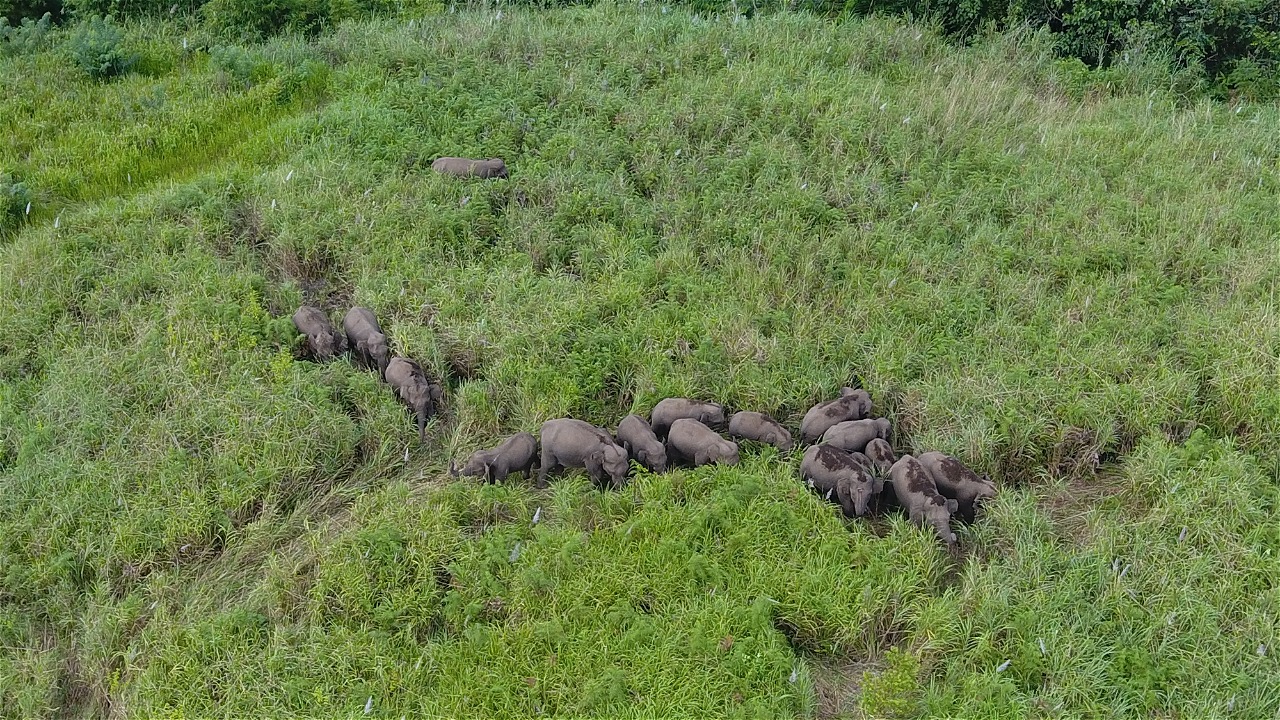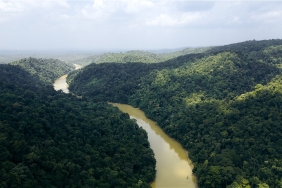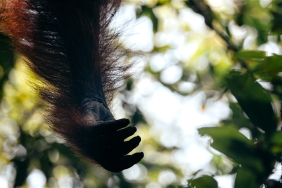SUMATRAN ELEPHANT POPULATION IN ACEH PROVINCE
By: Azhar
Sumatran elephants (Elephas maximus sumatrensis) are highly threatened throughout their range, large-scale forest conversion and conflict with humans as well as ivory poaching, the above factors are the cause of the decline in the quality of the environment itself, this also limits the distribution of elephant populations in Sumatra. These large mammals are highly dependent on large areas of habitat to meet their dietary demands, and Sumatran elephants are particularly vulnerable to the effects of habitat transformation (Leimgruber et al., 2003; Shannon et al., 2009).
Habitat transformation or the clearing of forests into plantations is the most serious problem on the island of Sumatra, whereas the presence of elephants is expected to help preserve a significant proportion of the population of representative ecosystems and biodiversity on the island of Sumatra but elephants function important ecological and ecosystems in terms of conservation.
This reality is far from reality, where elephants and their habitats are minimized by the presence of government policies to continue transforming forests into gardens, many examples of settlements opening up land and roads under the pretext of improving the regional and national economy. This policy can be seen in District and Provincial management areas, legally referred to as cultivation areas or other user areas, and easy access to forest areas to be permitted in the area borrow-to-use scheme for mining and roads, production and limited production forest areas that are easily twisted, here is the point of elephant conservation problems.
Elephant Population Distribution in Aceh
Aceh's forest areas are currently the main contributor to Sumatra's elephant population. The total population is still significant, overall Sumatran elephants in Aceh province amounted to 475 - 500 individuals, this group of elephants is spread in several habitat pockets such as in Lokop - Peunaron (East Aceh - North Aceh) totaling 200 - 250 individuals, habitat pockets Bengkung - Trumon (South Aceh - Aceh Singkil) totaling 80 - 100 individuals, Beutong (Nagan Raya) with 40-60 individuals, Ulu Masen habitat pocket (Aceh Jaya, Gempang, Pijay and West Aceh) with 100-120 individuals, Peusangan habitat pocket with 40-50 individuals, Pidie with 20-30 individuals (FKGI, at al, 2016).
This number can be said to be quite large at this time in Sumatra, Aceh's forests are a significant representative of Sumatran elephants in Indonesia to the world, therefore, to maintain elephants is also increasingly difficult, due to the habitat and space of the elephant itself. in addition to development factors and other factors that lead to land clearing in Aceh's forests will certainly sacrifice elephant habitat.
Elephant Management Approach in Aceh
Appreciation for the Government of Aceh which in recent years, has answered the challenges of elephant management in Aceh Province by building 7 elephant Conservation Response units called Conservation Response Units (CRU), the construction of CRU aims to respond quickly to elephant disturbances at the point of elephant conflict locations, the presence of CRU is expected to directly answer elephant disturbances in areas prone to elephant conflict, CRU was built by the Government of Aceh managed by the Government via the Environment and Forestry Service and in collaboration with the Aceh BKSDA and parties in Aceh.
For the construction of this CRU is one of the strong supports of the Aceh Government in elephant management, this is the first time the Regional Government has made a special elephant management policy through the creation of CRUs in its territory, the seven CRUs are located in elephant conflict hotspots in Aceh, including CRU Serba Jadi East Aceh, CRU Cot Girek North Aceh, CRU Peusangan Watershed, CRU Geumpang Pidie, CRU Sampoinit Ligan Aceh Jaya, CRU West Aceh and CRU Trumon. Although the CRU in Aceh has not functioned optimally but in the future it is expected to answer the challenges of the elephant crisis in areas prone to elephant conflict in Aceh Province, even though the CRU has not been running optimally, this CRU answers the direct challenges in areas prone to elephant and human conflicts, the State is present to win the elephant conflict.
The Aceh Government is expected to continue elephant management, not only with CRU with its rapid reaction, but the Aceh Government can restore the elephant corridor throughout the track until it reconnects, this activity is to organize the main elephant path that must be saved. The Aceh government is urged to stop the expansion of oil palm plantations in Aceh, simply by intensifying existing oil palm plantations, strictly prohibiting the expansion of oil palm plantations, and existing oil palm plantations are urged to implement sustainable oil palm plantations with the RSPO scheme.
There are many options for managing elephant conservation in Aceh, preventing or shrinking elephant habitat, or expanding elephant populations, or on economic development options related to social community welfare and well-organized and transparent land use planning. The Aceh Government's policy of compromising elephant conservation efforts in the long term can certainly realize the management of elephant conservation in Aceh and help save elephants.
Or with the new policy in Aceh, the Aceh Government is again transforming forests into oil palm plantations and mines by clearing forest areas, then elephants will soon be reduced in several pockets of habitat populations. With the loss of Aceh's forests, Indonesia's elephant population will continue to fluctuate.





